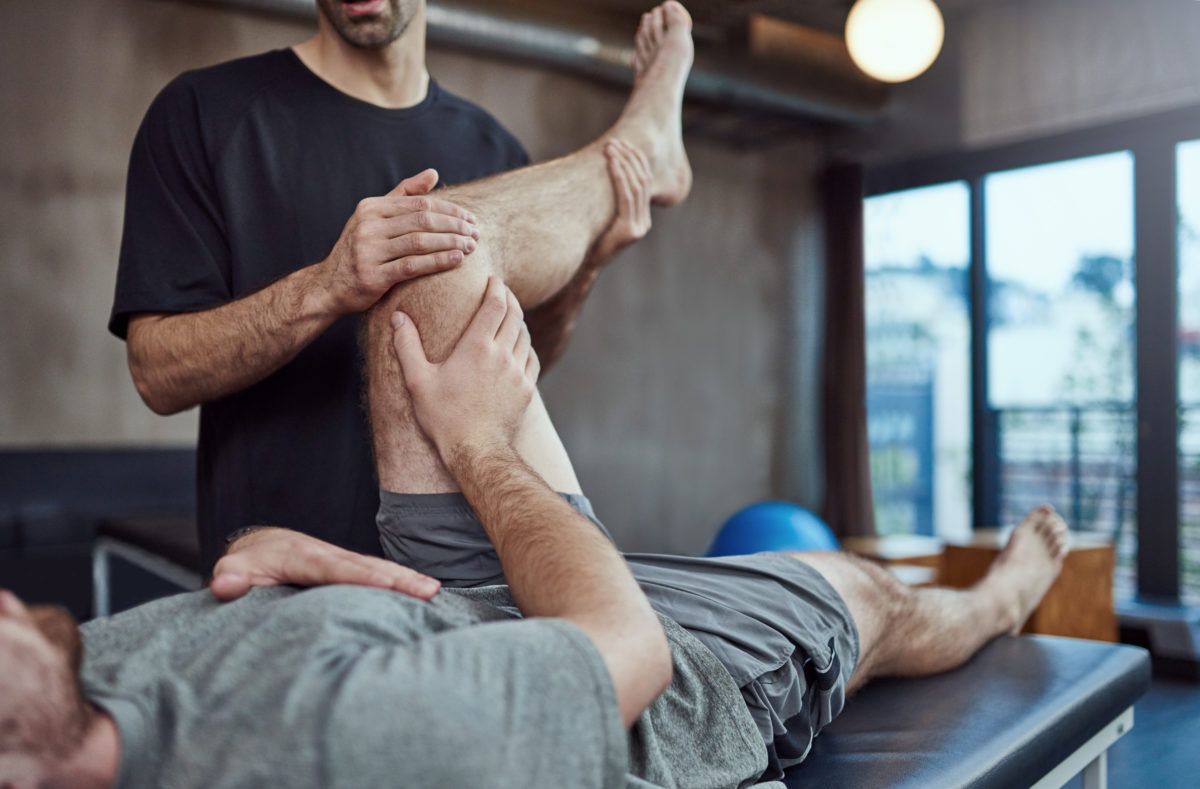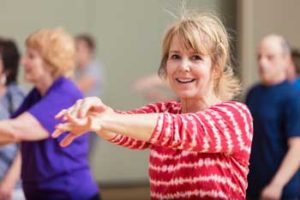
By Dr. John R. Mishock, PT, DPT, DC
Osteoarthritis (OA) is a common disease of aging responsible for chronic disability among older adults with approximately 70 million (20% of the population) being affected currently in the United States alone. The prevalence of OA increases with age, especially in individuals over age 50 (40% having OA). The disease most commonly affects the movable joints of the knees, hips, hands, and spine. OA is thought to occur with “wear and tear”, microtrauma leading to the breakdown of cartilage. However, it is also a result of advancing age, genetics, trauma, obesity, previous injury, and poor bone density. The typical signs and symptoms of OA are; swelling of the joint, pain, loss of motion, AM stiffness, deformity, and a feeling of “giving way” in the lower extremity.
The evidence is quite clear, with over 54 randomized controlled research trials demonstrating the effectiveness of physical therapy in the treatment of OA, in reducing stiffness, increasing strength, improving pain, and enhancing overall function and quality of life. (Fransen et al. Cochrane Data Base, 2016,) Studies have shown that a physical therapy treatment using a combination of exercise and manual therapy can improve pain and function by > 50%. Despite these research findings physical therapy is often under-utilized being replaced with pharmacological treatments and joint injections, despite limited long-term success.
In a head-to-head study of Nonsteroidal anti-inflammatory medication (NSAIDs) vs physical therapy, it was found that physical therapy was 2-3 times more effective than NSAID’s in reducing pain and improving function. (Quicke, Osteoarthritis Cartilage, 2019) Keep in mind that 30 million Americans use NSAIDs for OA daily. (Arthritis Advisory Committee and Drug Safety, 2014) Despite the lack of long-term effectiveness of NSAIDs, many physicians use this as a first-line treatment for OA. However, the American College of Radiology recommends physical therapy as a first-line treatment for OA.
Beyond Physical therapy’s effectiveness, it has also been shown to be cost-effective. Comparing “usual care” (medications and injections) with physical therapy, it was determined that the US health care system could save $935 per patient per year by utilizing physical therapy first. If physical therapy was utilized for individuals seeking treatment for OA it could save the US health care system an estimated $3-6 billion annually. (Abbott et al. Osteoarthritis and Cartilage, 2020)
Without early treatment, the progression of OA can lead to severe arthritis and the need for joint replacements. Each year there are over 600,000 knee and 450,000 hip joint replacements performed in the US. (Am Acad. of Ortho. Surg, 2018) However, there is an opportunity to prevent some of these joint replacements. A recent study showed that approximately 44% of total hip replacements could be reduced with physical therapy and other preventative techniques if done early enough. (Svege et al. Ann Rheum Dis, 2015) In no way should we minimize the life-changing opportunity of joint replacement, they are godsends for those with severe OA. However, for those with mild to moderate OA prevention through physical therapy and other measures should be the first-line treatment.
How does physical therapy exercise help reduce the symptoms of OA?
 Exercise therapy is often thought of as “medicine” for many health conditions. There is evidence to support that exercise can help prevent and treat 35 chronic conditions including, high blood pressure, heart disease, diabetes, cancers, and depression to name a few.
Exercise therapy is often thought of as “medicine” for many health conditions. There is evidence to support that exercise can help prevent and treat 35 chronic conditions including, high blood pressure, heart disease, diabetes, cancers, and depression to name a few.
With OA, as the cartilage degenerates the muscles around the joint become weak and tight. This weakness reduces stability around the knee increasing unwanted fine movements that further add to “wear and tear” worsening the OA. Functionally in the lower extremity the individual may notice weakness and stiffness in walking, stooping, squatting, and climbing stairs. Exercise therapy helps to increase strength and motor control around the affected joints adding stability and reducing unwanted fine movements reducing OA symptoms and progression. Exercise also helps to improve the collagen network in the joint cartilage by increasing glycosaminoglycan (GAG). The increase in GAG has been shown to improve the viscoelastic properties of the cartilage reducing wear and tear possibly minimizing the degenerative process.
For those with severe symptoms of OA, aquatic therapy (exercise in the water) can be a great place to start the exercise. Aquatic therapy reduces joint forces and enhances mobility allowing those with limited mobility a starting point. The physical therapist would eventually progress the aquatic therapy to a land-based exercise program.
How does manual therapy help reduce symptoms of OA?
Manual therapy (manipulation, mobilization, myofascial treatments) is the use of the practitioner’s hands to impose changes to the joints or soft tissues of the body. The hands-on touch of manual therapy stimulates the mechanoreceptor nerve ending (Ruffini corpuscles, Pacinian bodies, Golgi tendon organs, muscle spindle) which in turn stimulates the central nervous system to desensitize and reduce pain. It also causes changes in fluid dynamics of the joint reducing inflammation and restoring blood flow. The improved circulation brings in newly oxygenated blood and fibroblasts (fundamental cells to build and restore cartilage) which promote healing.
How do weight loss and nutrition improve OA?
Weight loss can significantly impact the symptoms of OA in the spine, hip, knee, and ankle. Every step we take increases the selective joint pressure by 2-5 times our body weight. Even a modest weight loss of 5% can significantly impact OA symptoms. (Christensen et al. Ann Rheum Dis, 2007) For some individuals, weight loss should be a fundamental treatment for OA and optimal health.
An inflammatory diet with a minimum of 5-10 fruits and vegetables can significantly reduce systemic body inflammation, potentially reducing OA symptoms. Nutraceutical supplements such as; collagen, glucosamine sulfate, turmeric may also help minimize the effects of OA, however, there is limited scientific evidence on their long-term effectiveness.
Studies show that in as little as 12 sessions of physical therapy improvements in pain and function can occur. (Juhl et al. Arthritis Rheumatol. 2014)
We can help!
If pain or limited function is keeping you from doing the activities you enjoy, call Mishock Physical Therapy for a FREE Phone Consultation (610)327-2600.
Email your questions to mishockpt@comcast.net.
Visit our website to REQUEST AN APPOINTMENT, learn more about our treatment philosophy, and meet our physical therapy staff.
Locations: Gilbertsville, Skippack, Phoenixville, Boyertown, Pottstown, Steiner Medical, and Limerick (inside the Spring Valley YMCA).
Dr. Mishock is one of only a few clinicians with doctorate-level degrees in both physical therapy and chiropractic in the state of Pennsylvania. He has authored two books; “Fundamental Training Principles: Essential Knowledge for Building the Elite Athlete”, “The Rubber Arm; Using Science to Increase Pitch Control, Improve Velocity, and Prevent Elbow and Shoulder Injury,” both can be bought on Amazon.
